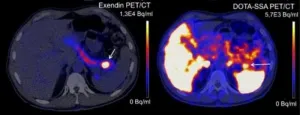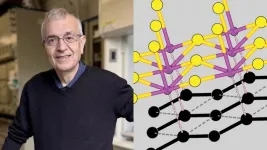Black patients more likely to die after coronary bypass surgery
Study suggests advances in cardiovascular care are not benefitting all racial groups
2024-10-21
(Press-News.org) PHILADELPHIA — Despite advances in cardiovascular medicine, Black patients are 22% more likely than white patients to die in the hospital after coronary artery bypass grafting (CABG) surgery, according to a study of more than 1 million patients presented at the ANESTHESIOLOGY® 2024 annual meeting.
“Our large study shows that disparities in cardiovascular health care delivery in the U.S. are ongoing, especially in Black patients,” said Vinicius Moreira, M.D., lead author of the study and chief anesthesiology resident at Advocate Illinois Masonic Medical Center, Chicago. “We found Black patients who have coronary artery bypass surgery experience higher rates of severe postoperative complications, including death and cardiac arrest. These alarming statistics call for urgent action from governments and health care systems.”
In the study, researchers assessed a national inpatient database for patients undergoing CABG in the U.S. from 2016 to 2021. Among the 1,159,040 patients who had CABG during that time, 75.58% were white, 7.44% were Hispanic and 6.75% were Black (10.23% were categorized as belonging to other racial groups). Compared to white patients, Black and Hispanic patients were more likely to be younger. On average, white patients were 77 years old, Black patients were 63 years old and Hispanic patients were 64 years old. Black and Hispanic patients also were more likely to have heart failure: 10.6% for white patients, 12.2% for Hispanic patients and 15.4% for Black patients.
Researchers determined that 2.4% of white, 2.5% of Hispanic and 3.2% of Black CABG patients died in the hospital. Compared to white patients:
Black patients were 22% more likely to die in the hospital.
Black patients stayed in the hospital 1.5 days longer on average (9.6 days for white patients, 10.7 days for Hispanic patients and 11.8 days for Black patients).
Black patients had a 23% higher rate of cardiac arrest.
Total hospital costs were $23,000 higher for Black patients and $78,000 higher for Hispanic patients.
Coronary arteries can be clogged due to plaque buildup, restricting blood flow to the heart and leading to chest pain, shortness of breath, and, in some cases, heart attack. CABG is a surgical procedure that takes a healthy blood vessel (usually from the leg, chest or arm) and attaches it to the aorta and the coronary artery just beyond the blockage so blood can flow to the heart.
“While advances in cardiovascular medicine, such as minimally invasive cardiac procedures and modern mechanical circulatory support devices, have increased life expectancy, our research suggests Black patients are less likely to have access to them. For example, we found that compared to white patients, a lower proportion of Black patients had bypass surgery when it was indicated,” said Dr. Moreira. “It is imperative that modern policies focus on improving the screening, diagnosis and treatment of chronic conditions that disproportionately impact the Black population and other minorities. Although strides have been made in workforce diversity and addressing racial biases in health care technology, the path toward true equity remains long and requires a much more concerted effort.”
He noted specific efforts that could reduce this disparity include:
Anesthesiologists, surgeons and others who provide perioperative care should develop preventive measures to reduce the risk of complications for patients at higher risk.
Preoperative and cardiovascular clinics should focus on rigorously optimizing patients’ health conditions before surgery.
Governments and health care systems must improve health care access and implement population-wide screening programs.
Governments must implement robust policies for tackling the obesity epidemic, which disproportionately affects Black and Hispanic patients.
*** ANESTHESIOLOGY 2024 news releases may contain updated data that was not originally available at the time abstracts were submitted.
THE AMERICAN SOCIETY OF ANESTHESIOLOGISTS
Founded in 1905, the American Society of Anesthesiologists (ASA) is an educational, research and scientific society with more than 58,000 members organized to advance the medical practice of anesthesiology and secure its future. ASA is committed to ensuring anesthesiologists evaluate and supervise the medical care of all patients before, during and after surgery. ASA members also lead the care of critically ill patients in intensive care units, as well as treat pain in both acute and chronic settings.
For more information on the field of anesthesiology, visit the American Society of Anesthesiologists online at asahq.org. To learn more about how anesthesiologists help ensure patient safety, visit asahq.org/madeforthismoment. Join the ANESTHESIOLOGY® 2024 social conversation today. Like ASA on Facebook, follow ASALifeline on X and use the hashtag #ANES24.
# # #
END
ELSE PRESS RELEASES FROM THIS DATE:
2024-10-21
A new study has found that after watching a docudrama about the efforts to free a wrongly convicted prisoner on death row, people were more empathetic toward formerly incarcerated people and supportive of criminal justice reform.
The research, led by a team of Stanford psychologists, published Oct. 21 in Proceedings of the National Academy of Sciences (PNAS).
“One of the hardest things for groups of people who face stigma, including previously incarcerated people, is that other Americans don’t perceive ...
2024-10-21
Billions of years ago, long before anything resembling life as we know it existed, meteorites frequently pummeled the planet. One such space rock crashed down about 3.26 billion years ago, and even today, it’s revealing secrets about Earth’s past.
Nadja Drabon, an early-Earth geologist and assistant professor in the Department of Earth and Planetary Sciences, is insatiably curious about what our planet was like during ancient eons rife with meteoritic bombardment, when only single-celled bacteria and archaea reigned – and when it all started to change. When ...
2024-10-21
DURHAM, N.C. – The El Niño event, a huge blob of warm ocean water in the tropical Pacific Ocean that can change rainfall patterns around the globe, isn't just a modern phenomenon.
A new modeling study from a pair of Duke University researchers and their colleagues shows that the oscillation between El Niño and its cold counterpart, La Niña, was present at least 250 million years in the past, and was often of greater magnitude than the oscillations we see today.
These temperature swings were more intense in the past, and the oscillation occurred even when the continents were in different places than they are now, according to the study, which appears the week ...
2024-10-21
Breathing thin air at extreme altitudes presents a significant challenge—there’s simply less oxygen with every lungful. Yet, for more than 10,000 years, Tibetan women living on the high Tibetan Plateau have not only survived but thrived in that environment.
A new study led by Cynthia Beall, Distinguished University Professor Emerita at Case Western Reserve University, answers some of those questions. The new research, recently published in the journal Proceedings of the National Academy of Sciences of the United States of America (PNAS), reveals how the Tibetan women’s physiological ...
2024-10-21
Microbes in the environment, not fossil fuels, have been driving the recent surge in methane emissions globally, according to a new, detailed analysis published Oct 28 in the Proceedings of the National Academy of Sciences by CU Boulder researchers and collaborators.
“Understanding where the methane is coming from helps us guide effective mitigation strategies,” said Sylvia Michel, a senior research assistant at the Institute of Arctic and Alpine Research(INSTAAR) and a doctoral student in the Department of Atmospheric and Oceanic Sciences at CU Boulder. “We need to know more about those emissions to ...
2024-10-21
HERSHEY, Pa. — Immunotherapies that mobilize a patient’s own immune system to fight cancer have become a treatment pillar. These therapies, including CAR T-cell therapy, have performed well in cancers like leukemias and lymphomas, but the results have been less promising in solid tumors.
A team led by researchers from the Penn State College of Medicine has re-engineered immune cells so that they can penetrate and kill solid tumors grown in the lab. They created a light-activated switch that controls protein function associated with cell ...
2024-10-21
The Arctic is threatened by strong climate change: the average temperature has risen by about 3°C since 1979 – almost four times faster than the global average. The region around the North Pole is home to some of the world’s most fragile ecosystems, and has experienced low anthropogenic disturbance for decades. Warming has increased the accessibility of land in the Arctic, encouraging industrial and urban development. Understanding where and what kind of human activities take place is key to ensuring sustainable development in the region – for both people and the environment. Until now, a comprehensive assessment of this part of the world has ...
2024-10-21
A new PET scan reliably detects benign tumors in the pancreas, according to research led by Radboud university medical center. Current scans often fail to detect these insulinomas, even though they cause symptoms due to low blood sugar levels. Once the tumor is found, surgery is possible.
The pancreas contains cells that produce insulin, known as beta cells. Insulin is a hormone that helps the body absorb sugar from the blood and store it in places like muscle cells. This regulates blood sugar levels. In rare cases, the beta cells malfunction, resulting in a benign tumor called ...
2024-10-21
During the late middle Pleistocene, between 300 and 400 thousand years ago, at least three ancient elephant relatives died near a river in the Kashmir Valley of South Asia. Not long after, they were covered in sediment and preserved along with 87 stone tools made by the ancestors of modern humans.
The remains of these elephants were first discovered in 2000 near the town of Pampore, but the identity of the fossils, cause of death and evidence of human intervention remained unknown until now.
A team ...
2024-10-21
Mercouri Kanatzidis, a materials scientist at the U.S. Department of Energy’s Argonne National Laboratory and professor at Northwestern University, will receive the 2025 ACS Award in the Chemistry of Materials from the American Chemical Society, the nation’s leading professional organization of chemists.
The award “recognizes and encourages creative work in the chemistry of materials,” according to the citation.
At Argonne, Kanatzidis’s work has focused on the implications of a ...
LAST 30 PRESS RELEASES:
[Press-News.org] Black patients more likely to die after coronary bypass surgery
Study suggests advances in cardiovascular care are not benefitting all racial groups






